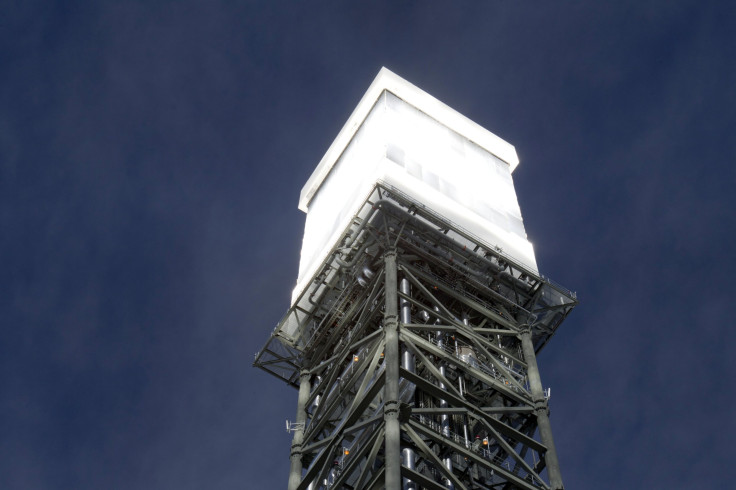Report Shows US Solar Energy Had Record Year Of Growth In 2013

A report by Greentech Media (GTM) and the Solar Energy Industries Association (SEIA) shows that solar energy in the United States had a record year in 2013, with a market growth of 41 percent.
Solar made up 29 percent of new energy-generating capacities in the U.S. in 2013. By the end of the year, there were more than 440,000 operational solar systems in the U.S. that generated 12.1 gigawatts of photovoltaics and 918 megawatts of concentrated solar power (CSP).
Photovoltaics produce energy directly from the sunlight, while concentrated solar power systems use mirrors to direct sunlight onto receivers that convert the light into heat that drives a heat engine, like a steam engine.
Concentrated solar power has attracted attention for the impressive look of CSP stations, like the newly opened Ivanpah facility in Nevada, that directs sunlight to a water boiler, seen in the center here:

The cost to install solar fell significantly as well. It was 15 percent cheaper to install at the end of 2013 than it was at the end of 2012. The cost of solar has dropped steadily since 2000, coiciding with increased numbers of installations.
Photovoltaic power installations had a market value of $13.7 billion in 2013, while weighted average system prices fell to $2.59 per watt in the fourth quarter.
Most of the photovoltaic installations are in Arizona, California, Massachusetts, New Jersey and North Carolina. Those states accounted for 81 percent of all new installations in the U.S. in 2013. California alone accounted for more than half of all installations last year.
"More solar has been installed in the U.S. in the last 18 months than in the 30 years prior," said SEIA president and CEO Rhone Resch.

Countrywide, 60 percent of solar installations were in utility grids, about 23 percent were non-residential and about 16 percent were residential installations.
GTM and SEIA predict that 2014 will be strong as well. They project a 26 percent growth in the U.S. solar market, with 6 gigawatts of new installations.
© Copyright IBTimes 2024. All rights reserved.












